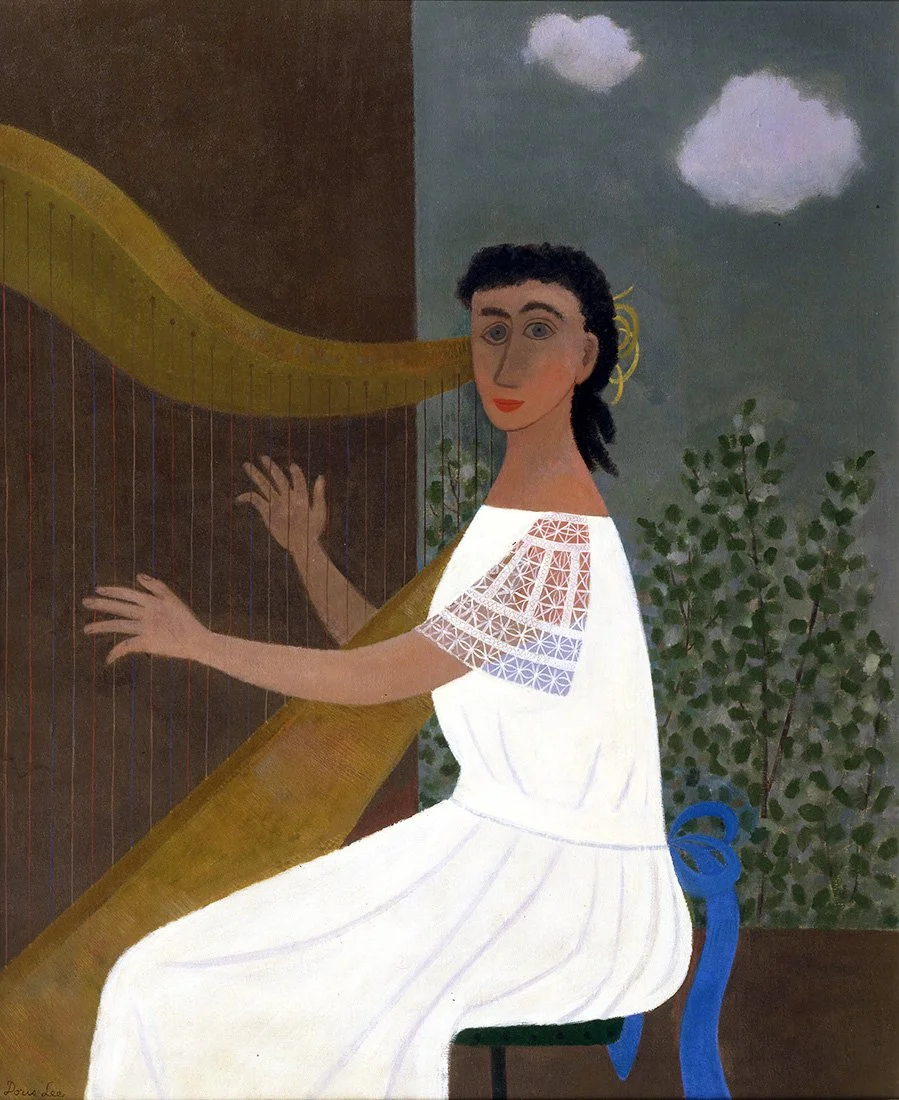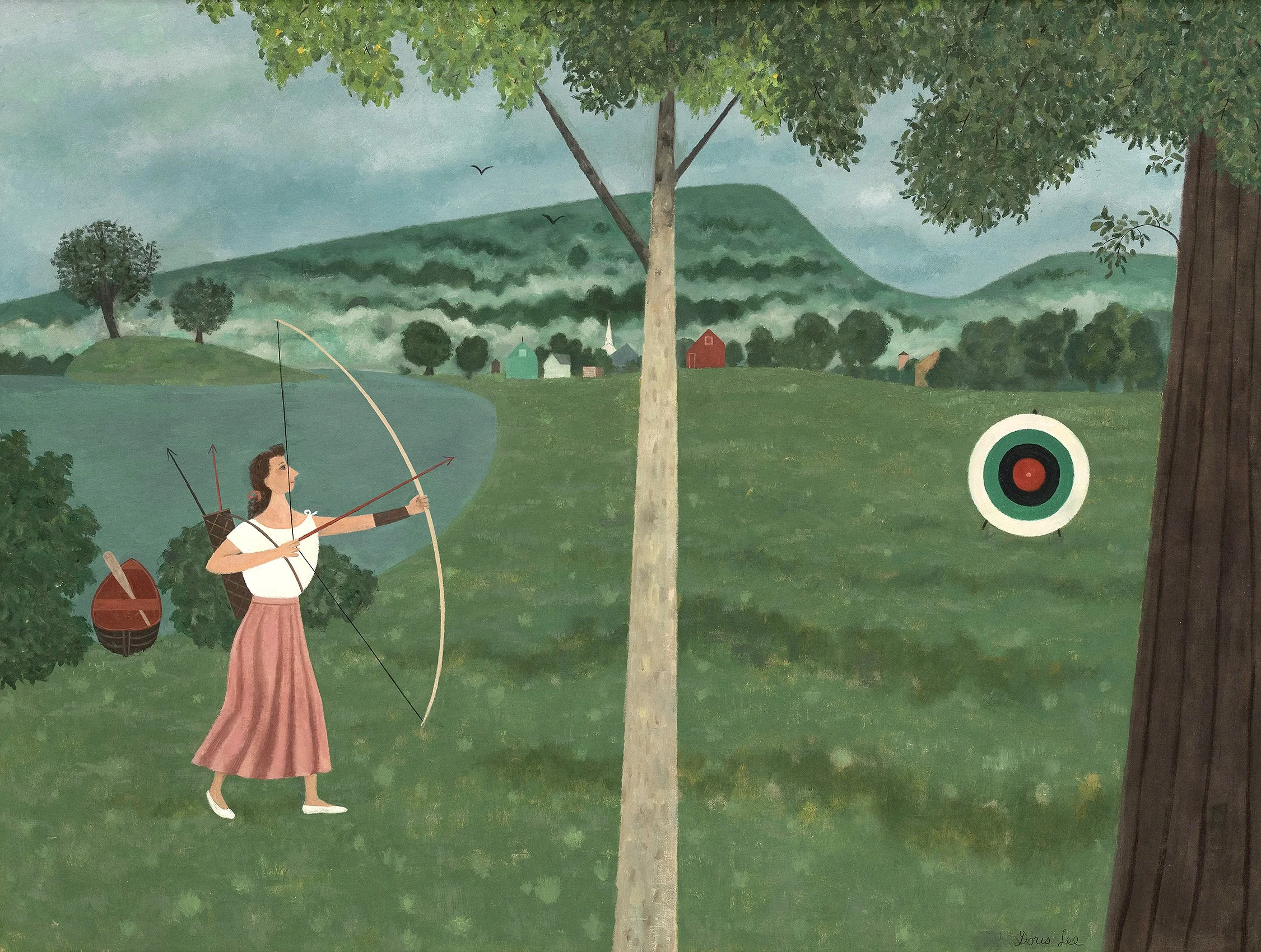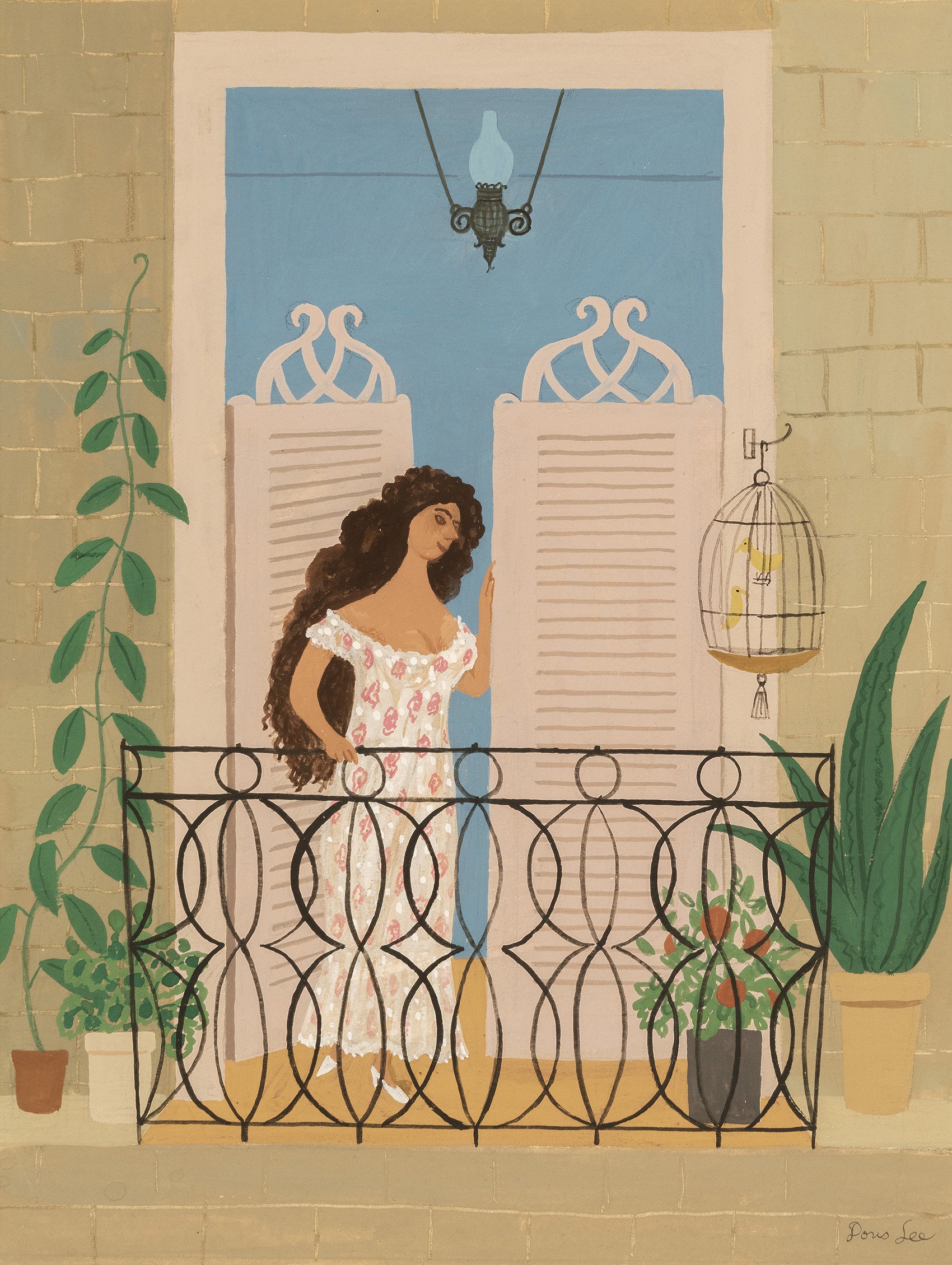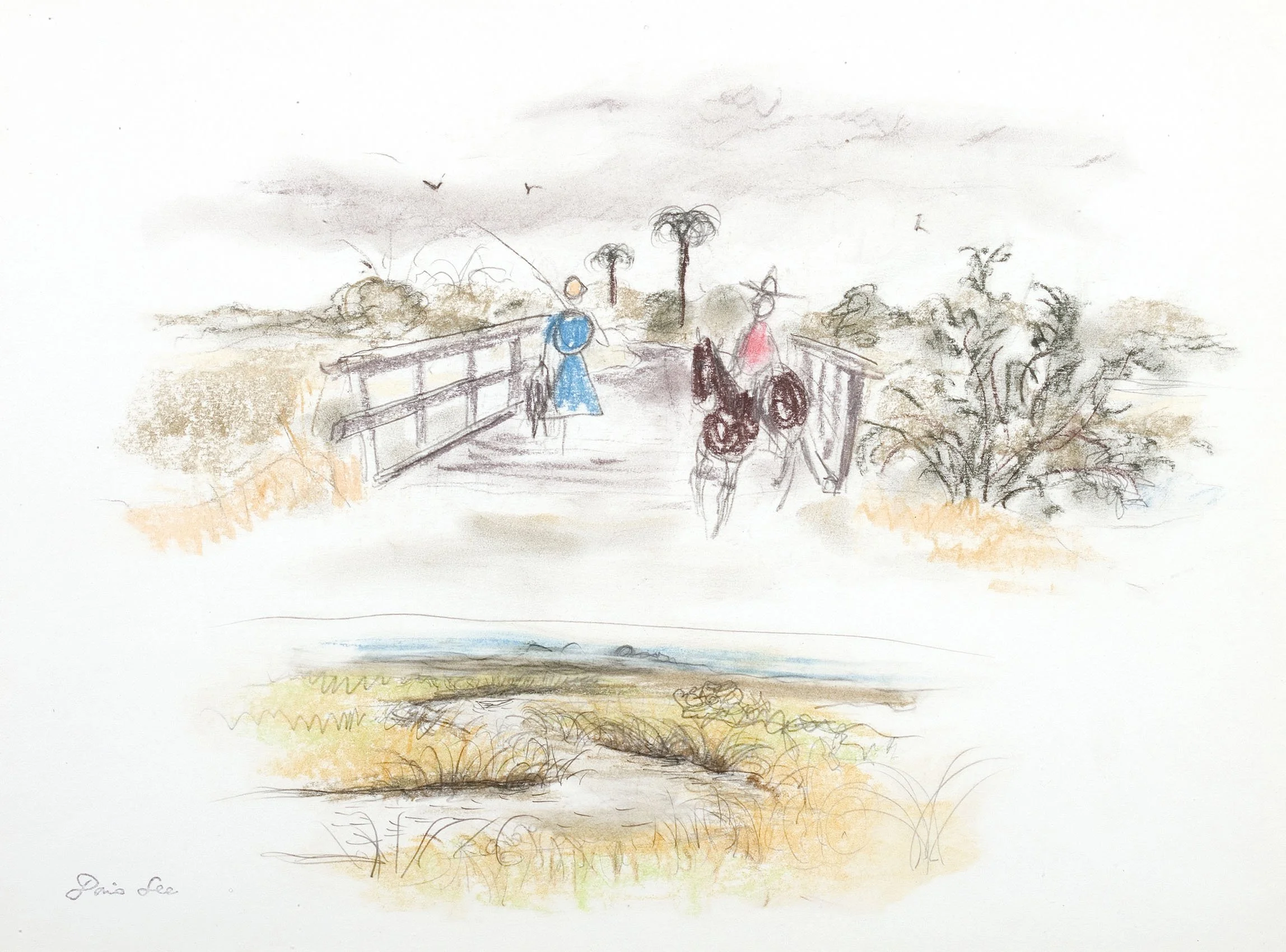November 11, 2021 - January 28, 2022
Read essay here. | Installation Views | For pricing and availability please call the gallery at 212-581-1657
Study for Noon
9 1/4 x 7 5/8 inches
framed: 13 1/4 x 11 1/2 inches
pastel and pencil on paper
estate stamped lower right
Study for Farmer's Wife
4 x 6 inches
framed: 8 5/8 x 10 3/8 inches
pastel on paper
estate stamped lower right
Study for Pastoral
8 1/4 x 6 inches
framed: 11 1/4 x 10 3/8 inches
pastel on paper
estate stamped lower left
Dark Pool
23 3/4 x 17 3/4 inches
framed: 29 3/4 x 24 1/2 inches
oil on board
signed lower left
Cottage Country
19 x 13 1/4 inches
framed: 23 1/2 x 17 3/4 inches
gouache on paper
signed upper left
High Flying Picnic, 1950
16 1/2 x 12 3/4 inches
framed: 24 1/4 x 20 1/2 inches
gouache on board
signed lower right
Study for Dark Pool
11 1/4 x 16 1/8 inches
framed: 16 x 20 3/4 inches
pencil on paper
estate stamped lower right
The Archer
39 1/2 x 51 1/2 inches
framed: 45 x 57 1/4 inches
oil on canvas
signed lower right
Darts
12 1/8 x 23 7/8 inches
framed: 16 7/8 x 23 7/8 inches
pencil on paper
estate stamped lower right
Country Schoolhouse, 1947
20 x 24 inches
framed: 25 1/4 x 29 3/8 inches
oil on canvas
signed lower right
Carolers
9 1/2 x 14 inches
framed: 15 3/4 x 20 3/8 inches
gouache on illustration board
signed lower right
Breezy Day
6 1/2 x 10 inches
framed: 11 1/4 x 14 7/8 inches
gouache on paper
signed lower right
Memorial Day
14 1/2 x 20 inches
framed: 20 1/2 x 26 1/4 inches
gouache on paper
signed lower right
Summer Souvenirs
8 x 10 inches
framed: 13 1/2 x 15 1/2 inches
oil on canvasboard
signed lower right
City Dog Walker
17 3/4 x 23 3/4 inches
framed: 24 1/2 x 30 1/4 inches
watercolor on paper
signed lower right
Vase of Flowers
16 x 18 inches
framed: 23 1/4 x 25 inches
oil on canvas
signed lower right
Flower Box Still Life
11 3/4 x 14 3/4 inches
framed: 19 1/2 x 22 1/2 inches
oil on board
signed lower right
Magnifying Glass with Sunflower Seeds
12 x 16 inches
framed: 18 1/4 x 21 7/8 inches
oil on canvasboard
signed lower left
Woman in a Garden
20 x 29 7/8 inches
framed: 27 1/2 x 36 1/2 inches
watercolor and gouache on paper
signed lower right
Lilacs
14 x 24 inches
framed: 21 1/2 x 31 1/2 inches
oil and collage on canvas
signed lower right
Map of North Africa
11 1/4 x 29 1/2 inches
framed: 19 1/2 x 37 1/2 inches
Gouache on paper
signed lower right
Carnival at Vera Cruz
10 x 14 inches
framed: 17 1/2 x 22 1/2 inche
gouache on paper
signed lower right
Park at Oaxaca
12 x 10 1/2 inches
framed: 15 14 x 14 1/4 inches
gouache on paper
signed lower right
Oaxaca Market
10 x 14 inches
framed: 17 x 21 inches
gouache on board
signed lower right
Cathedral Door
9 1/2 x 6 3/4 inches
framed: 15 1/8 x 12 5/8 inches
gouache on board
signed lower right
The Plateau People
9 1/2 x 7 1/4 inches
framed: 15 1/8 x 12 3/4 inches
gouache on board
signed lower right
Cuban Balcony
9 3/4 x 7 1/8 inches
framed: 15 1/2 x 13 1/4 inches
gouache on board
signed lower right
Beach Umbrella and Shrimp Boats
18 x 24 inches
framed: 24 3/4 x 30 1/4 inches
gouache on paper
signed lower right
Study for Rendezvous
11 x 15 inches
framed: 16 x 19 3/4 inches
pastel and pencil on paper
estate stamped lower left
Approaching the Beach
15 3/4 x 11 3/4 inches
framed: 22 1/2 x 18 1/4 inches
oil and collage on canvasboard
signed lower right
Field of Flowers
45 x 50 inches
framed: 50 3/4 x 55 3/8 inches
oil on canvas
signed lower right
Sun and Surf Study
15 3/4 x 11 3/4 inches
framed: 23 1/4 x 18 3/4 inches
watercolor on paper
signed lower right
Gray Day on the Beach and Fruit Still Life
11 x 8 1/2 inches
framed: 15 1/2 x 13 inches
pencil on paper
signed lower right
Key West Bathers at Dusk
17 3/4 x 24 inches
framed: 25 x 30 3/4 inches
watercolor on paper
estate stamped lower left
Studies for Butterfly Catchers
10 1/2 x 8 inches
framed: 18 5/8 x 16 inches
pastel and pencil on paper
estate stamped lower left
Ribbon Dance
49 1/2 x 45 1/2 inches
framed: 60 x 55 1/2 inches
oil on canvas
signed lower left
Vine Series # 2
43 1/2 x 23 5/8 inches
framed: 48 1/8 x 28 1/4 inches
oil on canvas
signed bottom center
Installation Views
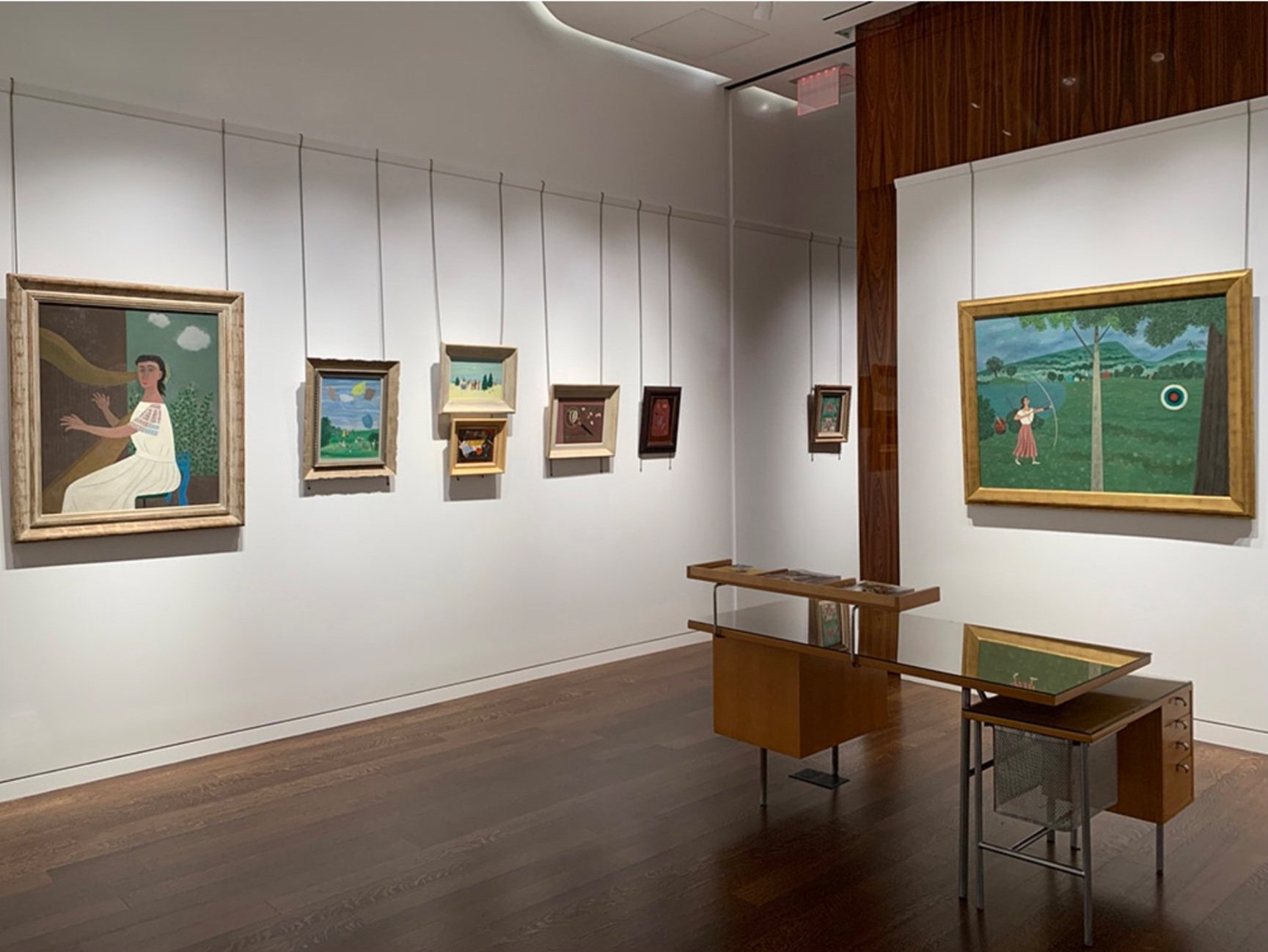
DORIS LEE: AMERICAN STORYTELLER
November 11, 2021 - January 28, 2022
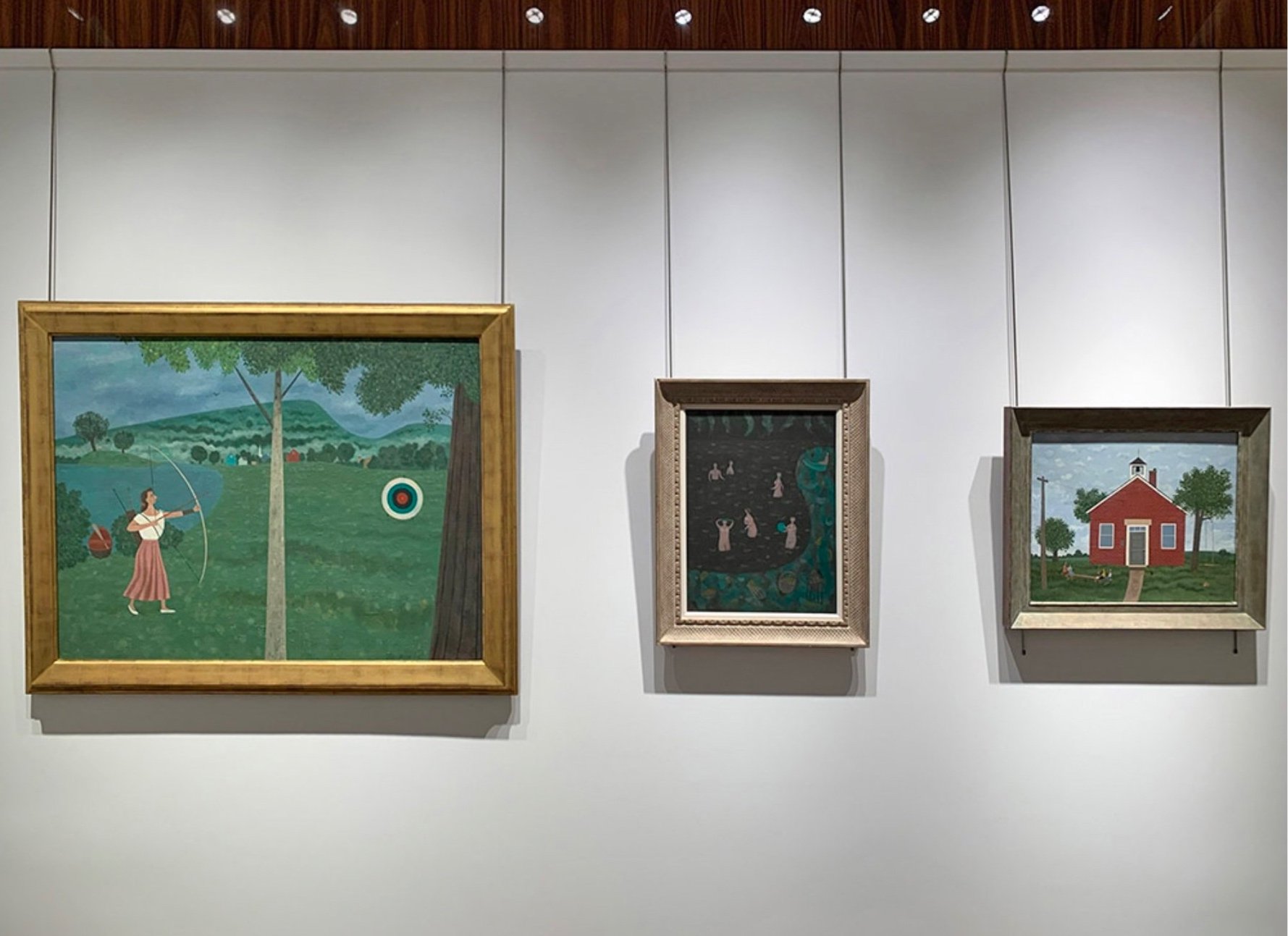
DORIS LEE: AMERICAN STORYTELLER
November 11, 2021 - January 28, 2022
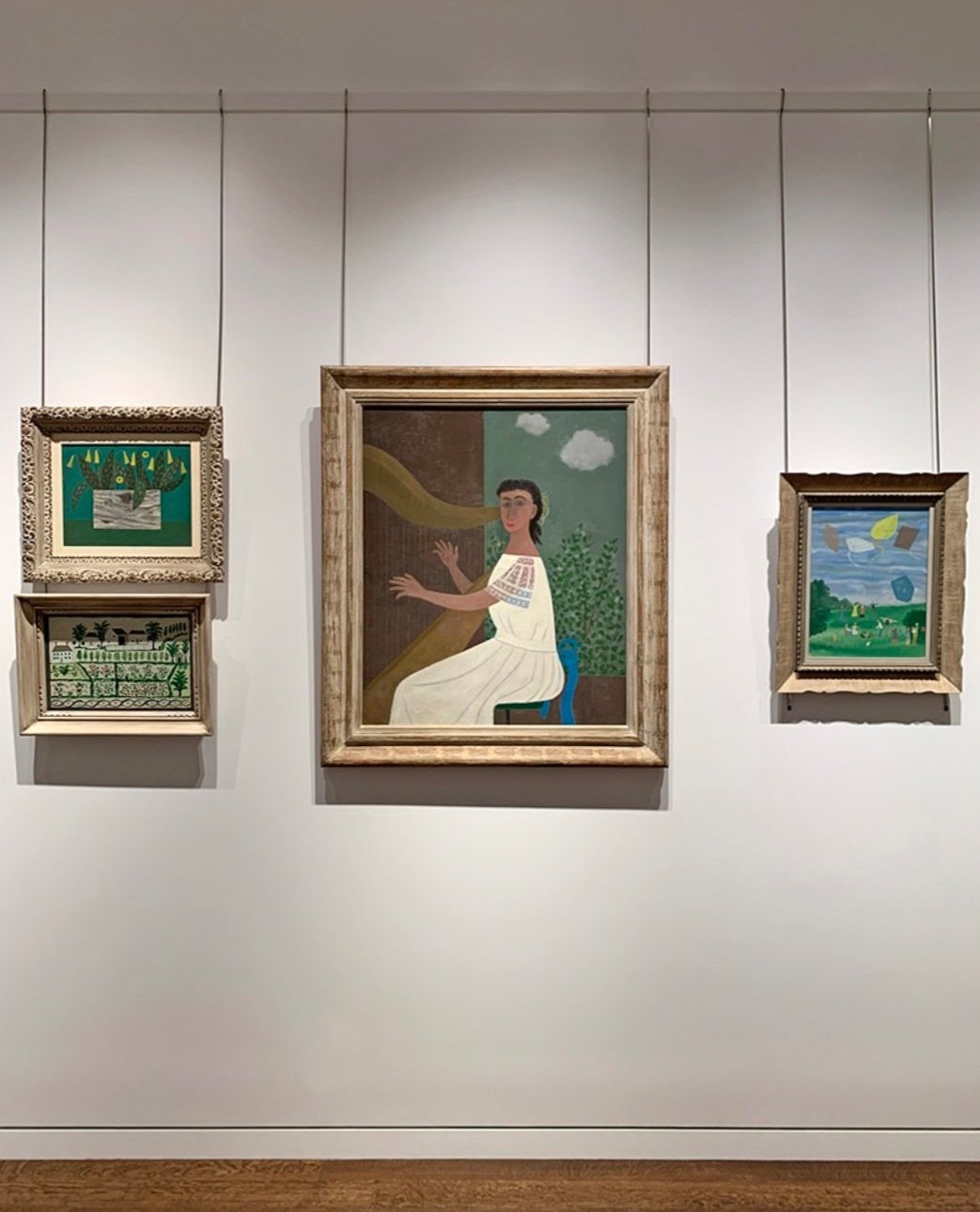
DORIS LEE: AMERICAN STORYTELLER
November 11, 2021 - January 28, 2022
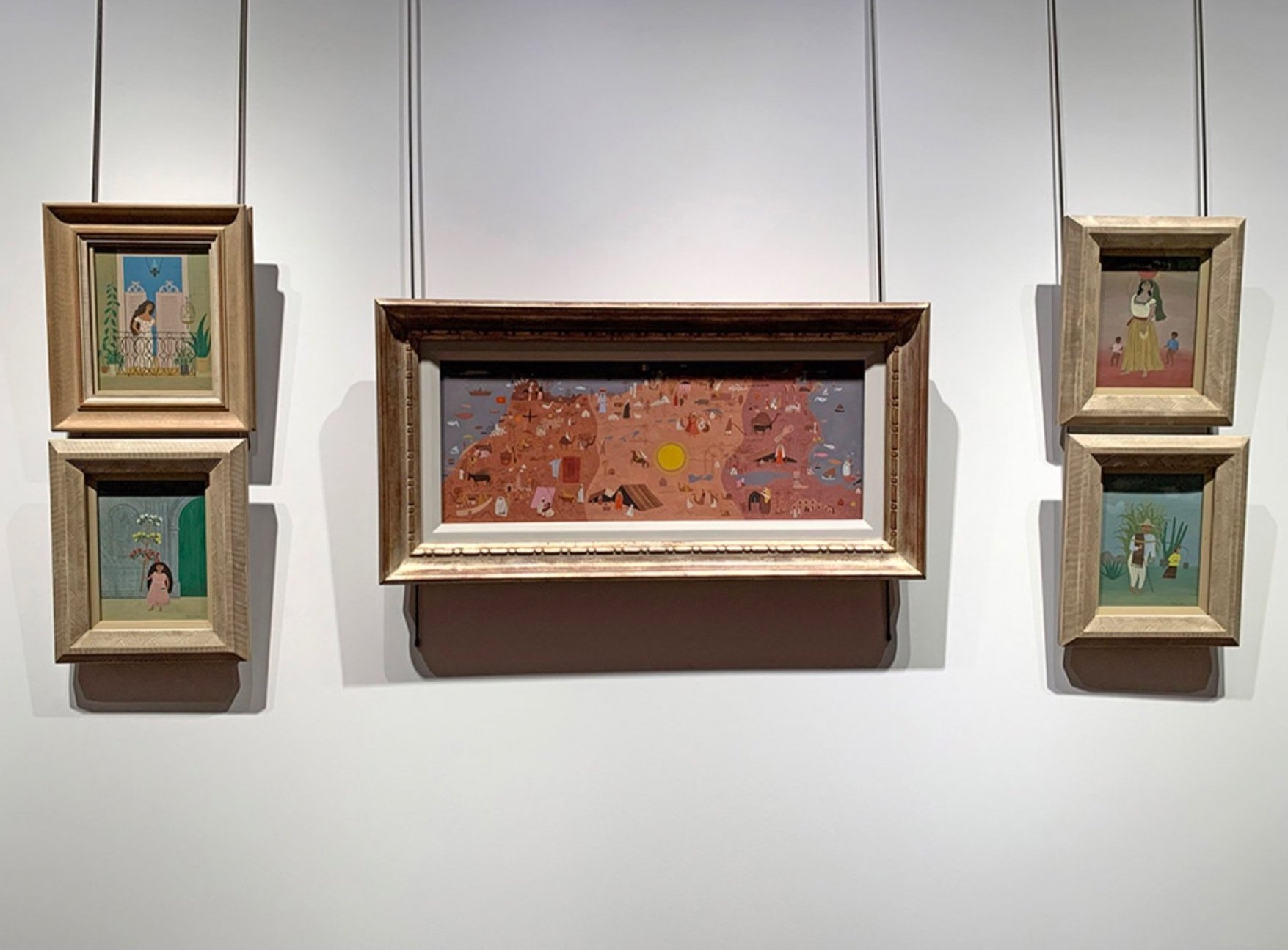
DORIS LEE: AMERICAN STORYTELLER
November 11, 2021 - January 28, 2022

DORIS LEE: AMERICAN STORYTELLER
November 11, 2021 - January 28, 2022

DORIS LEE: AMERICAN STORYTELLER
November 11, 2021 - January 28, 2022
Essay
As the exhibition Simple Pleasures: The Art of Doris Lee begins its four museum tour, D. Wigmore Fine Art offers an exhibition of artworks in oil, watercolor, gouache, pencil, and pastel executed between 1932-1967 to complement the museum exhibition.
Doris Lee joined one of America’s leading art colonies located in Woodstock, New York in 1931. Artists were newly focusing on social scenes of everyday life, both on the farm and in the city, as expressions of the shared history and support for Americans at a time of national instability. A rural landscape of this type by Lee titled Early Spring Landscape is in our exhibition. It was accepted for the Whitney Museum of American Art’s First Biennial Exhibition in 1932 and requested for the 1933 Annual Exhibition at the Pennsylvania Academy of the Fine Arts. We are also showing Landscape with Hunter, which was exhibited in the 1937 Corcoran Biennial Exhibition and reproduced in the 1945 American Artists Group monograph on Lee. Landscape with Hunter is rich in both autumn color and game as the hunter is provided with a choice of a fox or a stag. In 1936 Lee had a solo exhibition at the Phillips Memorial Art Gallery, Washington, DC and Maynard Walker Galleries became her dealer. With a museum exhibition and a leading New York dealer, Doris Lee at the age of 32 was now a prominent American artist.
In the Woodstock art colony, stylistic and ideological differences were accepted as vital to moving art forward. While surrounded by farms, mountains, and lakes, Woodstock was close enough to New York City that artists could keep a studio in the city and be in Woodstock during the summer. This proximity allowed Doris Lee to visit art galleries and museums and be known to dealers and curators. Each summer in Woodstock, Lee connected with other artists and they shared what they saw as important. In New York three major exhibitions at the Museum of Modern Art during the 1930s had an impact on Lee and other artists. The exhibitions were: The Art of the Common Man in America: 1750-1900 in 1932; Cubism and Abstract Art in 1936; and Masters of Popular Painting: Modern Primitives of Europe and America in 1938. One result of these exhibitions was artists began to consider folk art as a way into modernism. Lee and her husband Arnold Blanch became collectors of early Americana, as did their Woodstock artists friends Konrad Cramer and Yasuo Kuniyoshi. These exhibitions also helped Lee shift her focus in the 1940s to subjects that were part of her everyday life of friends, community, gardening, sewing, games, and travel. A painting in our exhibition that shows the transition Lee made from American Scene painting’s tighter realism to Americana appears in Vase of Flowers, a portrait of a country vase filled with colorful simple flowers placed on a floral patterned cloth executed around 1940. As Lee continued to paint still life, she focused on the abstract structure of a subject to flatten space and play with perspective. Our gallery exhibition includes several still lifes, such as Flower Box Still Life, Magnifying Glass with Sunflower Seeds, Summer Souvenirs, and Lilacs. They are offered to show Doris Lee’s continued stylistic evolution. In subjects such as Carolers, Memorial Day, and Cottage Country, Lee uses memory as a tool to clarify some elements and eliminate others. These paintings are each simplified stories told from a woman’s point of view with decoration and figuration that embrace pattern.
From 1941 on, Doris Lee was represented by Associated American Artists, led by Reeves Lewenthal, a dealer who negotiated commissions between his artists and corporations. This arrangement created more opportunities for Lee to travel nationally and internationally. Lee remained busy through the 1950s with exhibitions and commissions. For instance in the period 1950-1951, Lee’s schedule included: a solo exhibition at Associated American Artists Galleries, New York; an artist-in-residence at the Maitland Research Studio, Florida over the winter; a panel at the Third Woodstock Art Conference; inclusion in the major exhibition American Painting Today at the Metropolitan Museum of Art; and an application for a Guggenheim Fellowship. Also in 1950-1951, Lee received prizes for both her Abbott Laboratories advertisement and Seventeen magazine illustrations and received commissions to illustrate The Rogers and Hart Song Book, design ceramics for Stonelain, and travel for two months through North Africa for Life magazine.
We have selected Young Harpist as the cover of our gallery exhibition catalogue as it was shown in Lee’s 1950 solo exhibition of 22 oil paintings and 5 gouaches at Associated American Artists Galleries. In Young Harpist, a Doris Lee-like figure plays a musical composition for the viewer. A window with a country view behind the harpist suggests a fuller story is being told. Further works in our exhibition that deserve mention are Country Schoolhouse which was part of an 8 painting commission Lee received from J. L. Hudson Co. on contemporary life in Michigan and High Flying Picnic which received the award of merit at the Art Directors Club in 1950, submitted for consideration by art director of Seventeen magazine Cipe Pineles. Two further examples of Lee’s storytelling feature fun happenings in Woodstock are Dark Pool with an evening picnic and skinny dip and The Archer representing the women’s archery club to speak of the skills and strengths of women.
There are many fine paintings and drawings in our exhibition. We hope you will enjoy them. Like Doris Lee, our aim is to give you moments of joy.
[ TOP ]
Modernism 1913-1950 | Realism of the 1930s and 1940s | Abstraction of the 1930s and 1940s | Post-War | Selected Biographies

